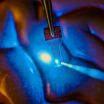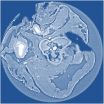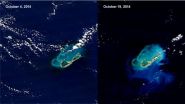(Press-News.org) New research shows that a preservation technique known as sequential subnormothermic ex vivo liver perfusion (SNEVLP) prevents ischemic type biliary stricture following liver transplantation using grafts from donations after cardiac death (DCD). Findings published in Liver Transplantation, a journal of the American Association for the Study of Liver Diseases and the International Liver Transplantation Society, indicate that the preservation of DCD grafts using SNEVLP versus cold storage reduces bile duct and endothelial cell injury post transplantation.
The shortage of organs for liver transplantation continues to pose a challenge for the transplant community, with up to 30% of patients on the liver transplant waiting list that die or are delisted due to disease progression. One solution to increase available organs is the use of marginal grafts, which include organs from older donors, steatotic grafts, and livers obtained after cardiac death. However, previous research reports that cold storage used to preserve DCD livers are linked to 20% to 40% ischemic type biliary strictures rate.
"While the use of marginal livers for transplantation has increased the donor pool, it is not without issue," explains lead author Dr. Markus Selzner from Toronto General Hospital in Canada. "Preservation techniques, such as cold storage, are not well tolerated by marginal livers and can cause reperfusion or graft dysfunction. This has prompted our investigation of preservation methods that avoid the negative effects of cooling."
For the present animal model study the research team compared SNEVLP to cold storage of organs taken from pigs. Liver grafts were stored for 10 hours at 4°C at 7 hours of cold storage and 3 hours of SNEVLP at 33°C. Liver tissue (hepatocyte), endothelial cell and biliary injury and function were measured.
Following transplantation the 7-day survival of the animals was 60% in the SNEVLP and 40% in the cold storage groups. There was no difference in the international normalized ration (INR), factor V and aspartate aminotransaminase (AST) levels between the two groups.
"Our findings suggest that cold storage followed by SNEVLP protects the liver from bile duct injury and reduces endothelial cell death," concludes Dr. Selzner. "This preservation method increases the donor pool by allowing better use of DCD liver grafts." The authors note that further investigation of this preservation method is needed to understand the full impact on human livers used in transplantation.
INFORMATION:
This study is published in Liver Transplantation. Media wishing to receive a PDF of this article may contact sciencenewsroom@wiley.com.
Full citation: "Subnormothermic Ex Vivo Liver Perfusion Reduces Endothelial Cell and Bile Duct Injury after DCD Pig Liver Transplantation." Jan M. Knaak, Vinzent N. Spetzler, Nicolas Goldaracena, Markus U. Boehnert, Fateh Bazerbachi, Kristine S. Louis, Oyedele A. Adeyi, Leonid Minkovich, Paul M. Yip, Shaf Keshavjee, Gary A. Levy, David R. Grant, Nazia Selzner and Markus Selzner. Liver Transplantation; (DOI: 10.1002/lt.23986).
URL: http://doi.wiley.com/10.1022/lt.23986
Author Contact: Media wishing to speak with Dr. Selzner may contact Alexandra Radkewycz with Toronto General Hospital at Alexandra.Radkewycz@uhn.ca.
Media Advisory
The Liver Meeting® 2014
Founded in 1950, AASLD is the leading organization of scientists and healthcare professionals committed to preventing and curing liver disease. AASLD has grown into an international society responsible for all aspects of hepatology, and the annual meeting attracts 10,000 physicians, surgeons, researchers, and allied health professionals from around the world.
The Liver Meeting® is the premier meeting in the science and practice of hepatology, including the latest findings on new drugs, novel treatments, and the results from pilot and multicenter studies.
When: November 7 - 11, 2014
Where: Hynes Convention Center in Boston, Massachusetts
Contact: Please go to https://www.xpressreg.net/register/asld114/media/reginfo.asp to obtain a press pass for this event.
About the Journal
Liver Transplantation is published by Wiley on behalf of the American Association for the Study of Liver Diseases and the International Liver Transplantation Society. Since the first application of liver transplantation in a clinical situation was reported more than twenty years ago, there has been a great deal of growth in this field and more is anticipated. As an official publication of the AASLD and the ILTS, Liver Transplantation delivers current, peer-reviewed articles on surgical techniques, clinical investigations and drug research — the information necessary to keep abreast of this evolving specialty. For more information, please visit http://wileyonlinelibrary.com/journal/lt.
About Wiley
Wiley is a global provider of content-enabled solutions that improve outcomes in research, education, and professional practice. Our core businesses produce scientific, technical, medical, and scholarly journals, reference works, books, database services, and advertising; professional books, subscription products, certification and training services and online applications; and education content and services including integrated online teaching and learning resources for undergraduate and graduate students and lifelong learners.
Founded in 1807, John Wiley & Sons, Inc. (NYSE: JWa, JWb), has been a valued source of information and understanding for more than 200 years, helping people around the world meet their needs and fulfill their aspirations. Wiley and its acquired companies have published the works of more than 450 Nobel laureates in all categories: Literature, Economics, Physiology or Medicine, Physics, Chemistry, and Peace. Wiley's global headquarters are located in Hoboken, New Jersey, with operations in the U.S., Europe, Asia, Canada, and Australia. The Company's website can be accessed at http://www.wiley.com.
VIDEO:
Scientists at the US Department of Energy's Ames Laboratory modeled the 'passing probability' of molecules within the narrow pores of mesoporous nanoparticles. This understanding will help determine the optimal diameter...
Click here for more information.
Scientists at the U.S. Department of Energy's Ames Laboratory have developed deeper understanding of the ideal design for mesoporous nanoparticles used in catalytic reactions, such as hydrocarbon conversion to biofuels. ...
ATLANTA—Animal-assisted therapy can reduce symptoms of anxiety and loneliness among college students, according to researchers at Georgia State University, Idaho State University and Savannah College of Art and Design. Their findings are published in the latest issue of the Journal of Creativity in Mental Health.
The researchers provided animal-assisted therapy to 55 students in a group setting at a small arts college in the Southeast. They found a 60 percent decrease in self-reported anxiety and loneliness symptoms following animal-assisted therapy, in which a ...
MADISON, Wis. — Developing invisible implantable medical sensor arrays, a team of University of Wisconsin-Madison engineers has overcome a major technological hurdle in researchers' efforts to understand the brain.
The team described its technology, which has applications in fields ranging from neuroscience to cardiac care and even contact lenses, in the Oct. 20 issue of the online journal Nature Communications.
Neural researchers study, monitor or stimulate the brain using imaging techniques in conjunction with implantable sensors that allow them to continuously ...
WASHINGTON D.C. Oct. 21, 2014 -- The most obvious effects of too much sun exposure are cosmetic, like wrinkled and rough skin. Some damage, however, goes deeper—ultraviolet light can damage DNA and cause proteins in the body to break down into smaller, sometimes harmful pieces that may also damage DNA, increasing the risk of skin cancer and cataracts. Understanding the specific pathways by which this degradation occurs is an important step in developing protective mechanisms against it.
Researchers from the École Polytechnique Fédérale de Lausanne ...
By analysing DNA extracted from the petrous bones of skulls of ancient Europeans, scientists have identified that these peoples remained intolerant to lactose (natural sugar in the milk of mammals) for 5,000 years after they adopted agricultural practices and 4,000 years after the onset of cheese-making among Central European Neolithic farmers.
The findings published online in the scientific journal Nature Communications (21 Oct) also suggest that major technological transitions in Central Europe between the Neolithic, Bronze Age and Iron Age were also associated with ...
WASHINGTON, D.C., October 21, 2014 -- X-ray phase tomography is an imaging technique that uses penetrating X-rays to create volumetric views through "slices" or sections of soft biological tissues, such as tumors, and it offers strongly enhanced contrast compared to conventional CT scans. Yet scientists still do not know which X-ray phase tomography methods are best suited to yield optimized results for a wide variety of conditions.
To answer this question, a large group of researchers in Europe set out to compare three different X-ray phase tomography methods at the ...
WASHINGTON, D.C., October 21, 2014 -- Hikers are generally advised that the weight of the packs they carry should correspond to their own size, with smaller individuals carrying lighter loads. Although petite backpackers might appreciate the excuse to hand off heavier gear to the larger members of the group, it turns out that they may not need the help.
While leading students on extended backpacking trips for Outward Bound, Kansas State University physics professor Michael O'Shea noticed that some of the smaller students could comfortably carry a greater pack weight than ...
VIDEO:
Chapman University has initiated the first comprehensive nationwide study on what strikes fear in Americans in the first of what is a planned annual study. The Chapman Survey on American...
Click here for more information.
ORANGE, Calif. – Chapman University has initiated the first comprehensive nationwide study on what strikes fear in Americans in the first of what is a planned annual study. According to the Chapman poll, the number one fear in America today ...
A team of researchers led by NOAA's Office of National Marine Sanctuaries have discovered two significant vessels from World War II's Battle of the Atlantic. The German U-boat 576 and the freighter Bluefields were found approximately 30 miles off the coast of North Carolina. Lost for more than 70 years, the discovery of the two vessels, in an area known as the Graveyard of the Atlantic, is a rare window into a historic military battle and the underwater battlefield landscape of WWII.
"This is not just the discovery of a single shipwreck," said Joe Hoyt, a NOAA sanctuary ...
NASA's Aqua and Terra satellites captured before and after images of Bermuda and surrounding waters before and after Hurricane Gonzalo struck the island on Oct. 17. The images revealed how Gonzalo stirred up the sediment from the ocean bottom.
The MODIS instrument or Moderate Resolution Imaging Spectroradiometer that flies aboard NASA's Aqua and Terra satellites provided imagery of Bermuda and the stirred sediment. In a comparison of imagery before and after Hurricane Gonzalo passed, the after image showed sediment streaming east and south of Bermuda. The MODIS instrument ...









